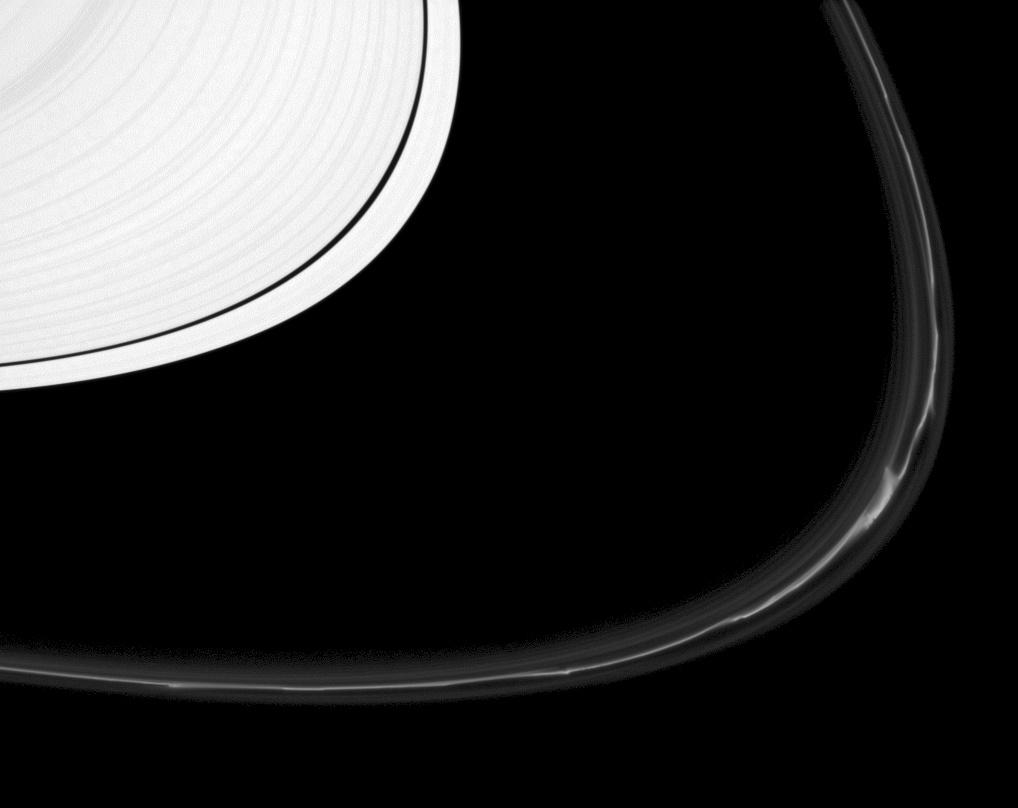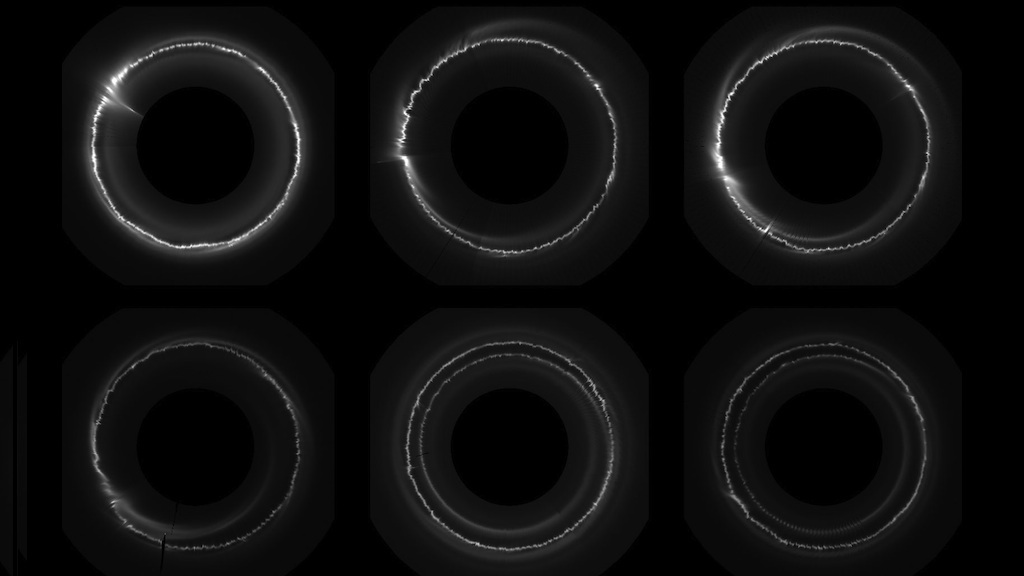Planets and Moons
ID: 11279

Saturn’s F ring does not sit still. Located on the outermost edge of the planet's many planetary rings, it wriggles and writhes, morphing into a slightly different shape at every turn. These movements are no accident. They’re the result of moons—sometimes called shepherds—passing by the ring. One of these shepherds is Prometheus, a moonlet just 53 miles across. As Prometheus passes, its gravity pulls on the F ring’s icy particles. This causes kinks, channels and streamers to form along the arc of the ring. Over time, these regular wriggles form recognizable patterns, some as long as 65 miles from top to bottom. By studying Saturn’s rings with missions like Cassini, NASA scientists hope to learn more about the structure and fluctuations of the F ring. The video captures a moment when Prometheus’s orbit causes one of its fascinating stirs.



A Dip In The Ring




Story Credits
Please give credit for this item to:
NASA's Goddard Space Flight Center
Narrated video courtesy of NASA/JPL
Images courtesy of NASA/JPL-Caltech/SSI/QMUL
NASA's Goddard Space Flight Center
Narrated video courtesy of NASA/JPL
Images courtesy of NASA/JPL-Caltech/SSI/QMUL
Short URL to share this page:
https://svs.gsfc.nasa.gov/11279
Keywords:
SVS >> App
NASA Science >> Planets and Moons
https://svs.gsfc.nasa.gov/11279
Keywords:
SVS >> App
NASA Science >> Planets and Moons







